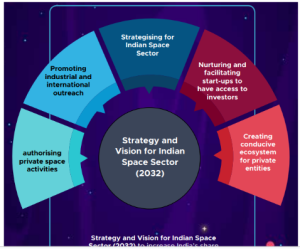| Naya Savera Scheme | Recently, the Union Minister of Minority Affairs informed Lok Sabha that nearly 1 lakh 20 thousand minority students have benefited under the Naya Savera scheme.
About Scheme
|
| eCOURTS MISSION MODE PROJECT (MMP) |
About eCourts Mission Mode Project:
|
| FCRA Permit |
About FCRA Permit:
|
Context:
Researchers have recorded the first instance of captive breeding of the Himalayan vulture (Gyps himalayensis) in India at the Assam State Zoo.
About Vultures:
Species of Vultures found in India and their Conservation Status:
 Image Credit: WWF
Image Credit: WWF
Factors responsible for decline in future population
Conservative Steps for Vulture:
News Source: The Hindu
Context:
The Ministry of Petroleum & Natural Gas has given information about the Pradhan Mantri JI-VAN scheme in the Lok Sabha.
About Pradhan Mantri JI-VAN (Jaiv Indhan- Vatavaran Anukool fasal awashesh Nivaran) Yojana:
Lignocellulosic Biomass
|
What is Biofuels:

Other Steps to Promote 2G Ethanol Plants:
News Source: PIB
Context:
NASA detected a signal from its Voyager 2 spacecraft on August 1, after losing communication for over a week.
About Voyager Mission:

Key features of the Voyager Mission:
About NASA:
|
News Source: The Indian Express
Context:
The Ministry of Road Transport and Highways has introduced the Vehicle Scrapping Policy to create an ecosystem for the phased-out removal of older, unfit, and polluting vehicles across the country.
 Image Source: Busimesstoday
Image Source: Busimesstoday
About Vehicle Scrapping Policy:
Need for Vehicle Scrapping Policy:
Provisions of the Vehicle Scrapping Policy:
News Source: PIB
Context:
The Union government’s Great Nicobar Project may see 9.64 lakh trees felled during its execution phase.
About Great Nicobar Project:
 Image Credits: The Hindu
Image Credits: The Hindu
Significance of Great Nicobar Project:
Issues:
Way Forward:
Great Nicobar Island(GNI):
|
News Source: The Hindu
Context:
According to the recently released Arthur D Little (ADL) report, India’s space economy could potentially touch $100 billion by 2040.
More about the News:

Examples of private sector involvement in space programs are:
About Indian Space Sector:
Reason for Growth of Indian Space Industry:
Indian Space Policy 2023:
| Institutions | Responsibility |
|---|---|
| Department of Space |
|
| Indian Space Research Organisation (ISRO) |
|
| NewSpace India Limited (NSIL) |
|
| Indian National Space Promotion and Authorisation Centre (IN-SPACe) |
|
Significance of Private Sector Participation in Indian Space Sector:
Private Participation in Indian Space Program:
Key Challenges Faced by Private Sector in Indian Space Sector:
Way Forward:
 Incentive: The government should encourage innovation and entrepreneurship in the space sector, by providing incentives, awards, recognition, or challenges to the private players who develop new or improved solutions or services.
Incentive: The government should encourage innovation and entrepreneurship in the space sector, by providing incentives, awards, recognition, or challenges to the private players who develop new or improved solutions or services.
Conclusion:
News Source: Livemint
SC Verdict on Newsclick Shows Adherence to Due Pro...
Stay Invested: On Chabahar and India-Iran Relation...
Credit Rating Agencies, Impact on India’s De...
Catapulting Indian Biopharma Industry
Globalisation Under Threat, US Import Tariffs Have...
Global Report on Hypertension, Global Insights and...
<div class="new-fform">
</div>
